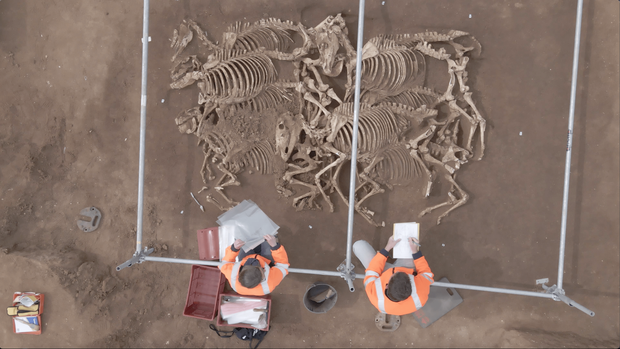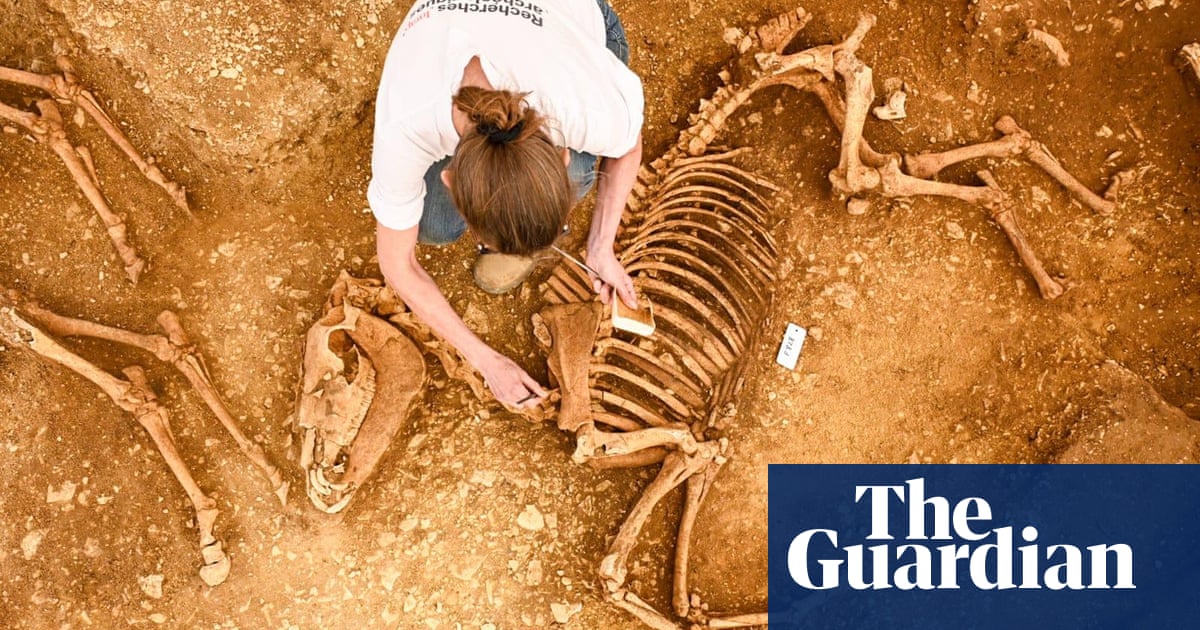
May 29, 2024 / 1:13 PM EDT / CNN
Building a medieval castle from scratch
Building a medieval castle from scratch in France uncovered over two dozen dead horses and left researchers with a puzzling mystery.
The excavation, located in Villedieu-sur-Indre in Central France, uncovered several buildings, pits, ditches and even a pathway from the early Middle Ages. The finds included nine pits containing the remains of horses from different time periods. One pit contained 26 horses lying on their right sides with their heads to the south; another contained two horses buried in the same way.
Archaeologists used radiocarbon dating to determine that the horses lived between 100 BC to 100 AD, a span of about 200 years. Just two of the pits have been fully excavated so far. In one pit, the horses were all found lying on their right sides with their heads directed south; animals were carefully placed in the pits and organized in rows and on different levels.
View of a horse storage pit and study of the arrangement of the horses. François Goulin, INRAP
The second pit contains just two horses, but they were buried the same way as the others. Another pit was found to contain two adult dogs, positioned and carefully placed in a similar fashion to the horses. However, researchers don't know what -- if anything -- these canine inclusions signify. While other pits have yet to be excavated fully, researchers have found remains of bones that have allowed them to identify at least 28 horses buried in the site.
The precision and uniformity of the burial sites have left researchers wondering how and why the animals died. According to the news release, illnesses can be ruled out since there are no young or female horses among the dead, leaving just two likely options: The horses may have fallen in battle and been buried with honors, or they may have been sacrificed.
A horse storage pit in the process of being excavated. Hamid Azmoun, INRAP
Similar discoveries have been made at other Gallic battle sites in France. One had a pit that held eight riders and their horses, while another site had 53 horses buried across five pits. The sites are close to battlefields in the region, making it possible that they were killed in those battles and buried, according to the news release.
Little information was given as to why the animals might have been sacrificed, with the news release noting that mass sacrifice can be difficult on the heart of a herd. However, researchers are continuing to study the pits and other structures at the site in order to answer how and why these animals died and what else they may have been used for.
In: Archaeologist France Kerry Breen N/ CNN KERRY BREEN is a news editor at CNN.com. A graduate of New York University's Arthur L. Carter School of Journalism, she previously worked at NBC News's TODAY Digital team. She covers current events, breaking news and investigates.




